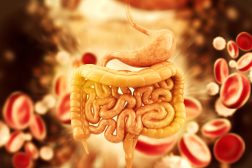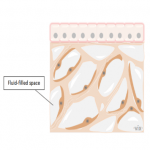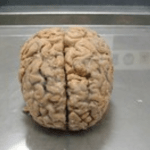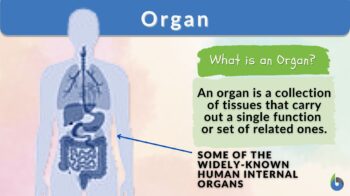
Organ
n., plural: organs
[ˈɔɹ.ɡən]
Definition: A specialized, self-contained structure that performs a specific function or set of functions
Table of Contents
Definition Of Organ
An organ is a collection of tissues that carries out a function or set of related ones. An organ often consists of the primary tissue that gives it its identity as well as additional tissues related to its structure and function.
One or more cells make up every living thing. Amoebas are unicellular organisms, meaning they have only one cell. However, most organisms are not like this. People and other multicellular animals are composed of a variety of cells. Cells are typically referred to as the “basic building blocks of life” because they are what organisms are made up of in the simplest form.
In sophisticated multicellular animals like people, the cells are arranged into tissues, which are collections of comparable cells collaborating on a particular activity. Organ systems are collections of organs with connected tasks. Organs are structures composed of two or more tissues that are organized to execute certain functions.
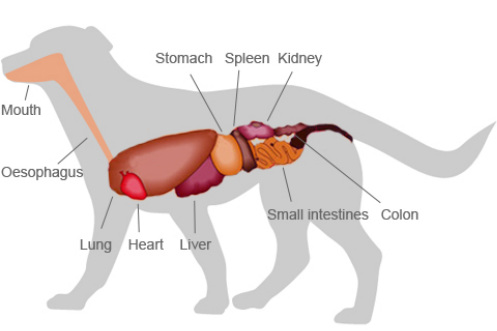
In the biology dictionary, an organ is a group of tissues that collectively form a functional unit that is specialized to carry out a certain function. The Latin organum phrase means an “instrument” or “tool”. The most common examples when people think about organs are the kidneys, brain, lungs, and heart.
The word organ refers to a functional component of the body that often refers to anatomic parts that carry out specific functions. The human body, for instance, consists of different organs identified by its shape, location, and function within the body. Your gastrointestinal tract and stomach both function as organs that break down food. Your lungs, which are also organs, exchange CO2 and oxygen. Another organ that functions fundamentally as a pump is your heart.
Organ systems are typically present in more complex creatures. In smaller species, these systems progressively emerge, and in higher animals, they reach their full complexity and functional specialization.
The reproductive organs (such as flowers, seeds, and spores) and the stem, root, and leaf are the major organs of plants. The stem also serves as the plant’s axis of support. These organs are in charge of the basic bodily processes that keep an organism alive, just like in animals.
Watch this vid about organs:
Biology definition:
An organ is a group of tissues that perform a specific function or group of functions. Typically, an organ would have the main tissue component that characterizes the organ and other tissues, such as those associated with the organ’s structure and function. For instance, in animals, an organ would usually consist of the main tissue together with the parenchymal (functional) and the stromal (structural) tissues. An example is the heart, which is comprised of the myocardium as the main tissue component and other tissues such as nerves, connective tissues, and blood vessels.
Organs that are functionally related comprise the so-called organ system. For example, the human cardiovascular system whose primary role is to pump and channel blood to and from the body and lungs is comprised of the heart, blood, and blood vessels.
Etymology: form the Latin word “organum,” which can be traced back to the Ancient Greek word “órganon”.
Compare: tissue
History
The English word “organ” refers to the musical instrument or musical instruments – sometimes known as the church organ or pipe organ – and dates back to the thirteenth century. The musical term’s meaning had been reduced by the late 14th century to designate primarily the keyboard-based instrument or the electronic organ. At the same time, a second meaning emerged, referring to a “body part adapted to a specific function”.
Plant organs are constructed of tissue that is made up of many types of tissue. Ground, vascular, and dermal tissues are the three types of tissue. An organ system exists when three or more organs are present.
The adjective visceral, commonly known as splanchnic, refers to anything related to the internal organs. Historically, Roman pagan priests such as the haruspices and augurs studied animal viscera to predict the future.
Anything relating to the interior organs is referred to as visceral, often known as splanchnic. In the past, Roman pagans such as haruspices or augurs would inspect an animal’s viscera to try to predict the future based on its size, shape, or other characteristics. In certain isolated, primitive civilizations, this ceremony is still significant.
The word “parietal,” which means “of or relating to the wall of a body part, organ, or cavity“, contrasts with the word “visceral.” The opposing sides of a membrane or a piece of connective tissue are frequently described by the two names.
Animals
The brain, heart, lungs, kidneys, liver, stomach, intestines, skin, and reproductive organs are among the primary or vital organs in higher animals.
The brain is the body’s central nervous system and controls all essential bodily processes, such as breathing and heartbeat, both directly and indirectly. The heart functions as a pump to move blood around the body.
The lungs perform a gas exchange by bringing oxygen into and taking out carbon dioxide from the blood.
The kidneys help the body eliminate metabolic wastes and keep the water balance in the body.
The key locations for food digestion and nutrient absorption are the stomach and intestines.
The liver is one of the most crucial organs. Its multiple jobs include cleansing the blood of pollutants and toxins, producing blood-clotting proteins, and storing vitamins and carbohydrates.
The skin serves several crucial purposes. It serves as the body’s primary barrier between the inside and exterior and as its first line of defense against “foreign” intruders including allergens and pathogens. In amphibians, the skin plays a special role in gas exchange to some extent.
Although the intricacy of the reproductive organs varies depending on the species, all animals have them. The uterus and ovaries are among the female reproductive organs in humans or the human body and other mammals; the testes and penis are among the male reproductive organs.
Many of the organs found in lower animals are also found in higher animals, although the structure or complexity of the organs may vary. For instance, many insects and other invertebrates‘ brains could be made up of several small nerve groups, or ganglia.
Viscera
The term “viscera” – multiple being “viscus”- is used to describe the internal organs of the abdominal, thoracic, and pelvic cavities in the study of anatomy. Viscera describes the body’s delicate organs. Visceral organs are the soft internal organs of the body, including the liver, pancreas, and intestines as well as the heart and lungs.
Visceral organs include the heart, lungs, digestive system, excretory, reproductive, and circulatory systems tissues. The abdominal organs can be categorized as solid or hollow. The liver, pancreas, spleen, kidneys, and adrenal glands are among the solid organs.
The stomach, intestines, gallbladder, bladder, and rectum are among the hollow organs. A muscular, hollow organ, the heart is located in the thoracic cavity.
Visceral anatomy is the subject of splanchnology. The word “parietal,” which means “of or relating to the wall of a body part, organ, or cavity“, contrasts with the word “visceral.” The opposing sides of a membrane or a piece of connective tissue are frequently described by the two names.
Origin and evolution
Flatworms and more derived taxa, such as bilaterians, are the first to exhibit organ-level organization in animals. The less advanced taxa (Placozoa, Porifera, Ctenophora, and Cnidaria) do not demonstrate tissue consolidation into organs.
More complicated animals are made up of various organs that have evolved. The liver and heart, for example, originated in chordates around 550-500 million years ago, while the stomach and brain (including the pineal gland) are even older, emerging in the progenitor of vertebrates, insects, mollusks, and worms around 700-650 million years ago.
The majority of vertebrate organs have an ancient origin, so scientists have searched for model systems where organs have recently developed and, preferably, have done so independently more than once.
The placenta, which has independently evolved in vertebrates more than 100 times, has only recently arisen in some lineages, and is present in some current taxa in intermediate stages, is an excellent example of this kind of research.
A variety of genetic and physiological processes, such as the repurposing of existing animal tissues, the acquisition of new functional properties by these tissues, and novel interactions of various tissue types, have been identified by studies on the evolution of the placenta as contributing to the origin and development of organs.
Vital Organs In Humans
Five organs in the human body are thought to be essential for survival. They are the kidneys, liver, lungs, heart, and brain. Without medical assistance, the organism will die if one of its five main organs stops working.
- The heart – Blood flow across the body is maintained by the heart, which is situated in the middle of the chest. Blood transports both the materials that cells require and the waste products that they produce.
- The brain – The control center of the body is the brain, which is found in the head. All memories, perceptions, thoughts, and emotions are housed there.
- The kidneys – The kidneys are placed on either side of the body in the back of the abdomen. Their job is to filter blood and produce urine, which is then expelled from the body.
- The liver – The liver is found on the right side of the stomach. It performs a variety of activities, including blood filtering, bile secretion for digesting, and protein production for blood clotting.
- The lungs – The two lungs are on opposite sides of the upper chest. Their primary role is to exchange oxygen and carbon dioxide with the blood.
Plants
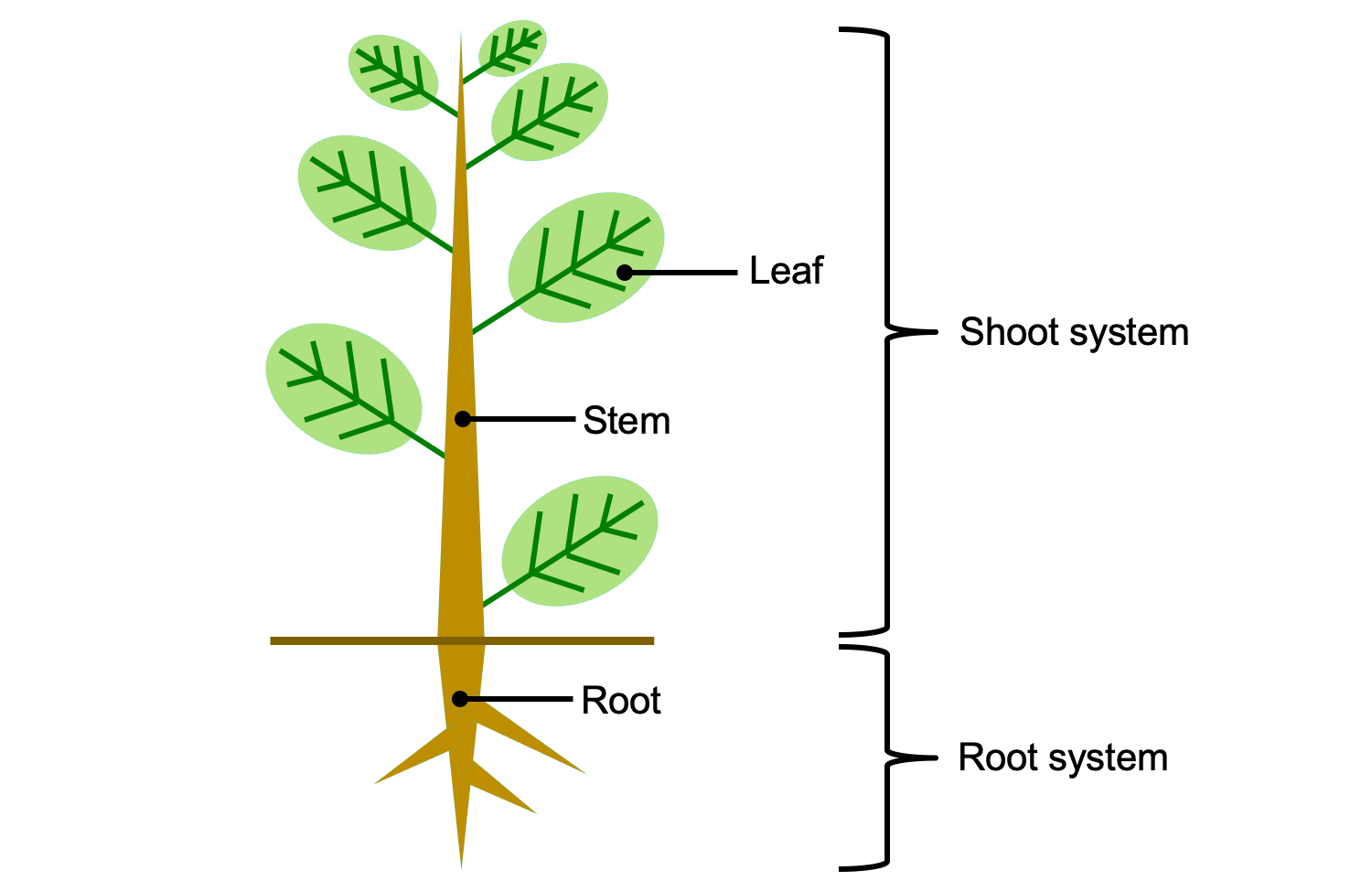
Plant morphology includes the study of plant organs. Plant organs can be categorized as vegetative or reproductive. Plant organs that are edible include the roots, stems, and leaves. There are various reproductive organs. They are symbolized by the flower, seed, and fruit in flowering plants (angiosperms).
Gymnosperms would have similar fundamental organs. However, they don’t have flowers, and therefore, have no fruits. Nevertheless, they produce seeds that are typically found on the surface or within the cones The organ that carries the reproductive components of conifers is referred to as a cone. The reproductive organs are referred to as strobili in Lycopodiophyta and as gametophores in mosses in other classifications (phyla) of plants. Plants frequently distinguish between their shoot and root organ systems.
The term “shoot organ system” refers to the entire plant’s above-ground components (in non-epiphytes), including the functionally separate leaf and flower organs.
The vegetative organs are necessary for a plant’s survival. While animals have 11 organ systems, plants have many fewer, with some performing crucial tasks such as photosynthesis and the reproductive organs being essential in reproduction. If asexual vegetative reproduction occurs, the vegetative organs are those that produce the next generation of plants.
Society And Culture
The transplantation of an organ from a living or deceased donor into a person with a failing organ is a common practice in many nations. Immunosuppression is frequently necessary for transplanting larger solid organs to avoid organ rejection or graft-versus-host disease. The idea of developing artificial or lab-grown organs has generated a lot of interest worldwide.
Organ transplants
An organ transplant entails taking an organ from a healthy person and giving it to a potentially terminally ill or dying person. The recipient of the organ’s life may be saved. The donor is the individual who provides the organ. The receiver is the individual who receives the organ.
The heart, kidneys, liver, lungs, intestine, and pancreas can all be transplanted. Heart valves, bones, tendons, ligaments, skin, pieces of the eye, and bone marrow are just a few examples of the body components that can be transplanted.
If you pass away at a hospital with healthy organs, people can donate their organs. You can give a kidney, a portion of your liver, a bone, or bone marrow while you’re still alive if you’re in good health.
NOTE IT!
Is the Liver an Organ or a Gland? What makes a structure an organ?
Previously, there were discussions about the liver, whether it is an organ or simply a gland. Some thought of the liver only as a gland because in the past a biological organ was chiefly associated with only the larger, visibly complex structures like the brain, lungs, kidneys, and heart. The liver is a relatively softer, homogenous organ, plus its glandular function (bile secretion) is highly emphasized over its other essential functions (such as detoxification, storage, and metabolism). Many anatomists and biologists consider the liver as both an organ and a gland as established by numerous studies on its structure and function.
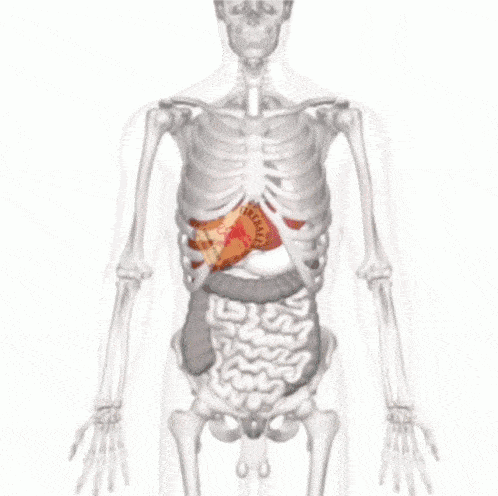
Thus, a question arises: “What makes a structure a biological organ?”
A biological organ would have these common features:
- Specialization: an organ is a structure with a distinct and specific function (or a set of functions)
- Tissue composition: an organ is comprised of more than one type of tissue that work together to carry out their respective functions. Thus, an organ would typically have epithelial, connective, muscular, nervous, and other tissues.
- Self-containment: an organ would have well-defined boundaries to distinguish them from surrounding tissues or adjacent organs
- Specific location: an organ would be located in a particular site in the body and is consistently positioned in other individuals of the same species
- A part of a system: remember that a biological system is comprised of organs that work together to carry out a particular task. Thus, an organ would have a function that contributes — directly or indirectly — to the overall function of a system.
- Essentiality: An organ is essential in a way that its removal or dysfunction could significantly affect the organism’s health and survival.
Here is an article about the discovery of interstitium as a biological organ.
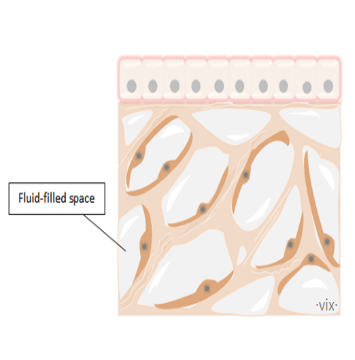
Take the Organ – Biology Quiz!
Further Reading
- Effect of Chemicals on Growth & Development in Organisms
- Regulation of Organic Metabolism, Growth and Energy Balance
- Kidneys and Regulation of Water and Inorganic Ions
- The Evolutionary Development of Multicellular Organisms
- The Evolution of Cell Organelles
- Sense Organs in Insects
References
- 10.4: Human Organs and Organ Systems. (2018, December 21). Biology LibreTexts. https://bio.libretexts.org/Bookshelves/Human_Biology/Human_Biology_(Wakim_and_Grewal)/10%3A_Introduction_to_the_Human_Body/10.4%3A_Human_Organs_and_Organ_Systems
- Australia, H. (2023, July 13). Organ transplants [Text/html]. Healthdirect Australia. https://www.healthdirect.gov.au/organ-transplants
- Bell, D. J. (n.d.). Viscera | Radiology Reference Article | Radiopaedia.org. Radiopaedia. https://doi.org/10.53347/rID-88373
- Biology of the Heart—Heart and Blood Vessel Disorders. (n.d.). MSD Manual Consumer Version. Retrieved July 15, 2023, from https://www.msdmanuals.com/en-gb/home/heart-and-blood-vessel-disorders/biology-of-the-heart-and-blood-vessels/biology-of-the-heart
- Griffith, O. W., & Wagner, G. P. (2017). The placenta as a model for understanding the origin and evolution of vertebrate organs. Nature Ecology & Evolution, 1(4), 72. https://doi.org/10.1038/s41559-017-0072
- Life Sciences: Organ Systems. (n.d.). PEER Program (Youth STEM Promotion). Retrieved July 15, 2023, from https://vetmed.tamu.edu/peer/organ-systems/
- Organ. (n.d.-a). Genome.Gov. Retrieved July 15, 2023, from https://www.genome.gov/genetics-glossary/Organ
- Organ. (n.d.-b). Britannica Kids. Retrieved July 15, 2023, from https://kids.britannica.com/students/article/organ/623458
- Organ | Definition, Types, & Facts | Britannica. (n.d.). Retrieved July 15, 2023, from https://www.britannica.com/science/organ-biology
- Organismal Biology | Georgia Tech Biological Sciences. (n.d.). Retrieved July 15, 2023, from https://organismalbio.biosci.gatech.edu/
- The Animal Model. (2008, March 13). Speaking of Research. https://speakingofresearch.com/facts/the-animal-model/
- Thoracic cavity—Knowledge @ AMBOSS. (n.d.). Retrieved July 15, 2023, from https://www.amboss.com/us/knowledge/thoracic-cavity
- Tissues, organs, & organ systems (article) | Khan Academy. (n.d.). Retrieved July 15, 2023, from https://www.khanacademy.org/_render
- Transplant | Definition, Types, & Rejection | Britannica. (2023, June 7). https://www.britannica.com/science/transplant-surgery
©BiologyOnline.com. Content provided and moderated by Biology Online Editors.




